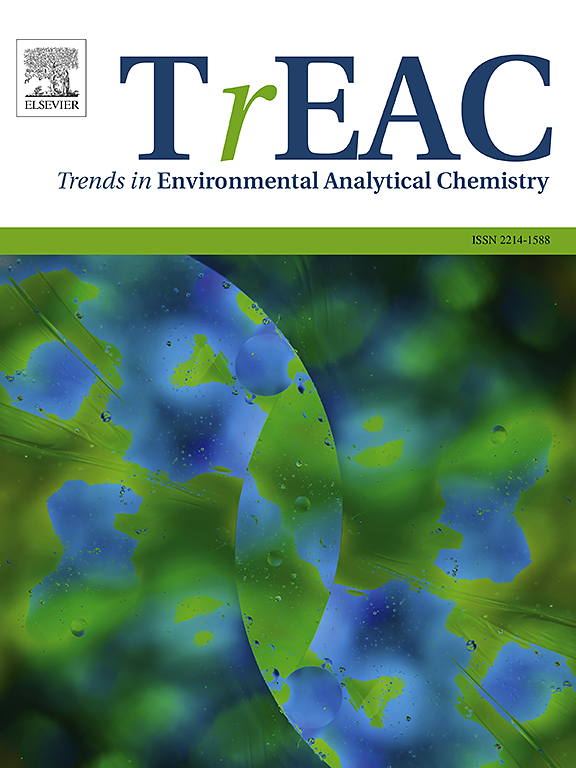Combination of miniature electrode systems via nanomaterials: Pesticide analysis
IF 13.4
2区 化学
Q1 CHEMISTRY, ANALYTICAL
引用次数: 0
Abstract
Pesticides are vital in modern agriculture for controlling pests and diseases, thereby enhancing crop yields and food security. However, their extensive use has raised environmental and health concerns due to their persistence and toxicity. Conventional detection methods, such as high-performance liquid chromatography and gas chromatography, are effective but often costly and time-consuming, prompting the need for alternative approaches. Electrochemical methods emerge as promising solutions for pesticide analysis owing to their affordability, simplicity, and suitability for field applications. The incorporation of nanomaterials into electrochemical sensors significantly enhances their sensitivity and selectivity. Nanomaterials, including noble metals, carbon nanotubes, and metal oxide nanoparticles, improve sensor performance through their unique physical, chemical, and biological properties. This review examines recent advancements in miniature electrochemical sensors for pesticide detection, including contemporary literature. It discusses the structure, applications, and impacts of pesticides, and highlights the advantages of electrochemical sensors enhanced by nanomaterials. Various electrode types and their modifications with nanomaterials are evaluated. Additionally, the integration of smartphone technology and innovative approaches such as lab-on-a-chip and portable sensors are explored. By incorporating recent studies, this review provides a comprehensive reference for developing advanced, portable, and in situ analyzers utilizing nanomaterials, aiming to enhance food safety, human health, and environmental monitoring.
结合微型电极系统通过纳米材料:农药分析
农药在现代农业中具有防治病虫害、提高作物产量和粮食安全的重要作用。然而,由于其持久性和毒性,它们的广泛使用引起了对环境和健康的关注。传统的检测方法,如高效液相色谱和气相色谱,是有效的,但往往昂贵和耗时,促使需要替代方法。电化学方法因其可负担性、简单性和适合现场应用而成为农药分析的有前途的解决方案。纳米材料在电化学传感器中的应用显著提高了传感器的灵敏度和选择性。纳米材料,包括贵金属、碳纳米管和金属氧化物纳米颗粒,通过其独特的物理、化学和生物特性提高了传感器的性能。本文综述了用于农药检测的微型电化学传感器的最新进展,包括当代文献。讨论了农药的结构、应用和影响,并强调了纳米材料增强的电化学传感器的优势。评估了各种电极类型及其与纳米材料的修饰。此外,智能手机技术的集成和创新的方法,如芯片上的实验室和便携式传感器的探索。本文综述了纳米材料在食品安全、人类健康和环境监测等方面的研究进展,为开发先进、便携和原位的纳米材料分析仪提供了参考。
本文章由计算机程序翻译,如有差异,请以英文原文为准。
求助全文
约1分钟内获得全文
求助全文
来源期刊

Trends in Environmental Analytical Chemistry
Chemistry-Analytical Chemistry
CiteScore
21.20
自引率
2.70%
发文量
34
审稿时长
44 days
期刊介绍:
Trends in Environmental Analytical Chemistry is an authoritative journal that focuses on the dynamic field of environmental analytical chemistry. It aims to deliver concise yet insightful overviews of the latest advancements in this field. By acquiring high-quality chemical data and effectively interpreting it, we can deepen our understanding of the environment. TrEAC is committed to keeping up with the fast-paced nature of environmental analytical chemistry by providing timely coverage of innovative analytical methods used in studying environmentally relevant substances and addressing related issues.
 求助内容:
求助内容: 应助结果提醒方式:
应助结果提醒方式:


